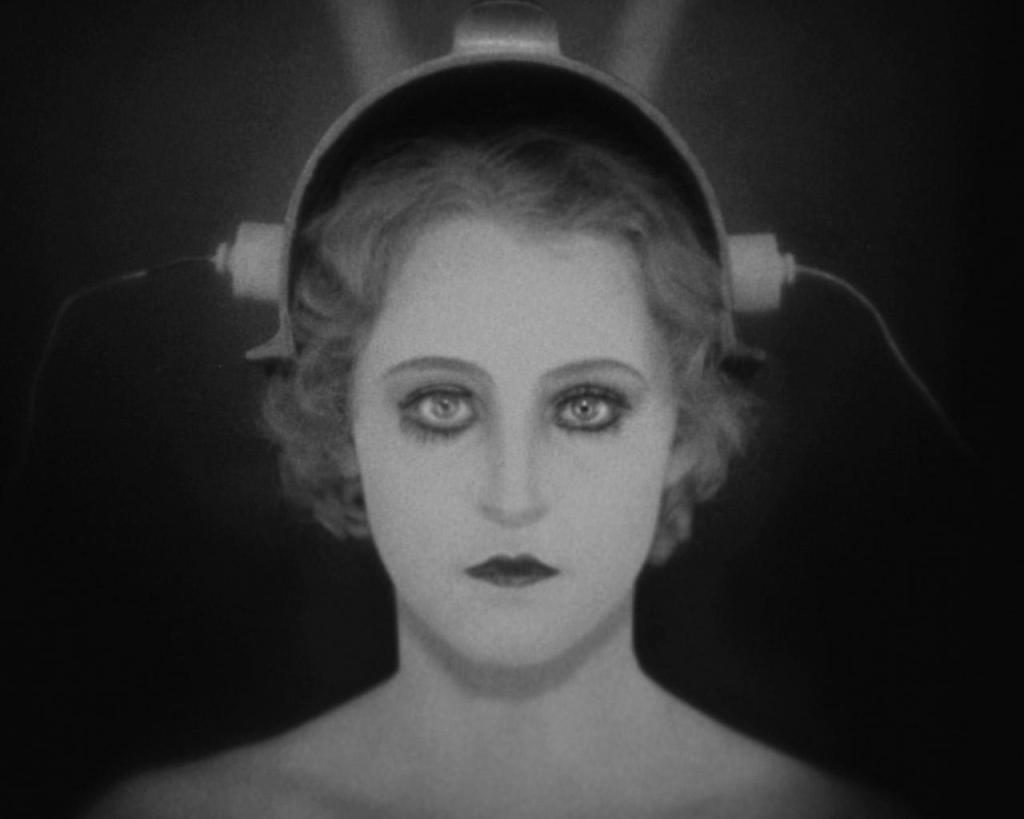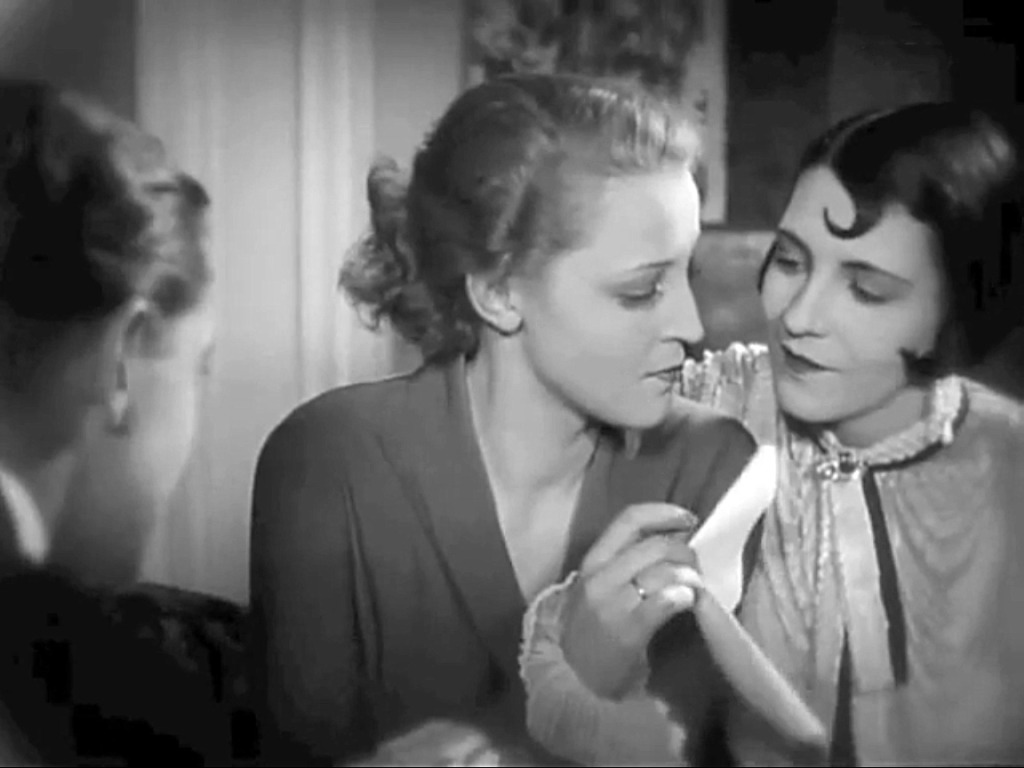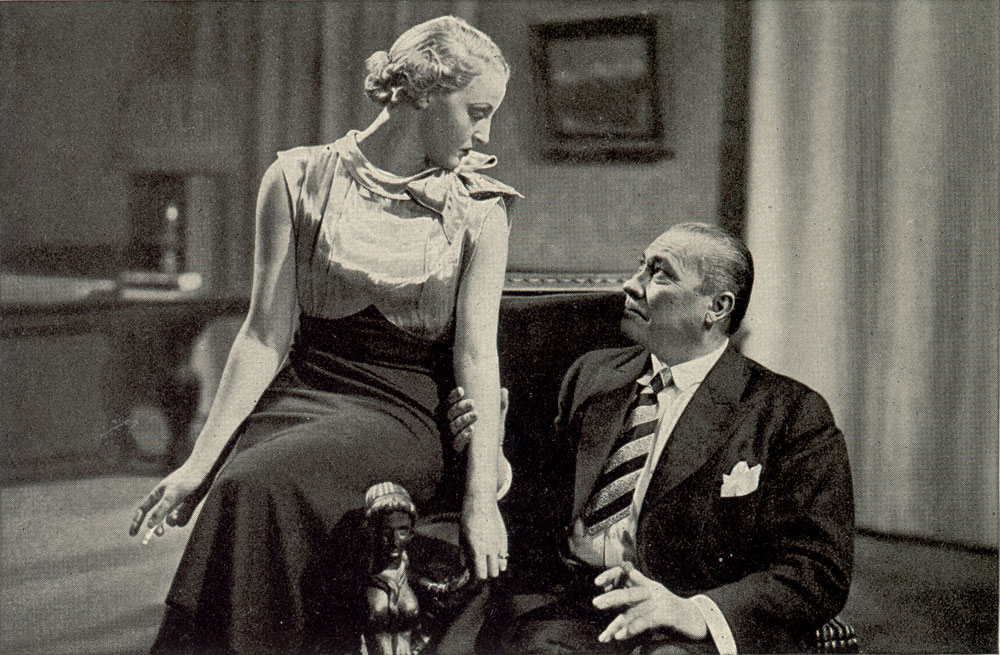There is no face more closely associated with the grandeur of Weimar Cinema than that of Brigitte Helm. Her first appearance on film was in the iconic dual-role of the teacher and the robot in Fritz Lang’s Metropolis (1927). As the villainous clone, her frenzied dancing and her kohl-rimmed eyes in winking close-ups incarnated a particularly timely force of evil: the giddy whirl of decadent 1920s Berlin. This was a time, according to German politician Gustav Stresemann, in which the people of Germany, intoxicated by the possibilities of the post-war world, were dancing on a volcano. Danger was afoot. In Metropolis, Helm’s crooked finger lured the hapless citizens to the brink. And audiences followed.

Metropolis may have ruined the finances of the Ufa studio, but it brought Helm overnight stardom as a teenager. Born Brigitte Schittenhelm in 1906, she had been only 17 when the shoot began and not yet 19 when it was released in January 1927. Filming Metropolis was a gruelling, prolonged process, with days and nights spent filming over 17 months, including hours spent in the constricting robot suit, struggling in gallons of cold water, and enduring perfectionist Lang’s repeated takes. Helm said that the actors followed Lang’s directions “as though in a trance, enthusiastic and enraptured at the same time [but] the work wasn’t easy, and the authenticity in the portrayal ended up testing our nerves now and then.” This represented a gruelling initiation for a reluctant star, whose real ambition was to be an astronomer. It was Helm’s mother who pushed her into the movies. She sent her teenage daughter’s photograph to screenwriter Thea von Harbou, and there was an element of subterfuge involved in delivering Helm to her screen test. As soon as she was enrolled in the cast of Metropolis, Helm signed, and was locked into, a ten-year contract with the Ufa studio.
More nuanced roles, and better performances, were to come in a career that was no less remarkable for being brief. After fulfilling the terms of her employment, Helm retired and live the rest of her life in seclusion in Ascona, Switzerland, where she raised four children with her second husband, industrialist Hugo Kunheim, and refused all requests for interviews about her film career. She died in 1996, aged 88. In the decade that she spent in the film industry, Helm worked with many of European cinema’s most acclaimed directors, including Marcel L’Herbier, G.W. Pabst, Victor Tourjansky, Gerhard Lamprecht and E.A. Dupont, and in her own inimitable style created characters who captivated audiences with the precarious balance of outward poise and inner tempests.

In subtler ways than Metropolis did, her best films revealed a fascinating divergence between the cool elegance of her beauty, and her passionate, or even cruel characters. As with many of her silent-era peers, she took the transition to sound in her stride, but as the end of her tenure at Ufa loomed, Helm’s disgust at the Nazi takeover of the film industry, and her desire to start a family nudged her towards retirement. The alternative would have been Hollywood, the idea of which had long horrified her. Far from the characters she played on screen, Helm was more or less a model of moral rectitude in her private life and considered the lives of American film stars much too close to her fictional creations: “a mad and terrible Devil Dance of matrimonial mishaps”, according to a 1930 interview in Film Weekly. Perhaps the lady protested too much. Perhaps she was attempting to counterbalance her on-screen persona.
Helm found the seductress persona established by her debut hard to escape, although she found numerous ways to reinvent the temptress type, and she sued Ufa for casting her too often in vamp roles – she wanted to play a greater diversity of women on screen. Nevertheless, in 1928 and 1930, she appeared in one of her most famous roles as the titular vamp in two versions of Alraune, one silent (directed by Henrik Galeen) and one sound (Richard Oswald). In this perverse tale, which combines elements of science-fiction and horror, Helm plays a woman whose birth was the result of an artificial insemination experiment: a professor impregnated her sex-worker mother with a mandrake root, sprouted from the semen of a hanged man. The subtlety of Helm’s performance transcends such a lurid premise.

In between, Helm had a spectacular 1929, appearing in some of Europe’s finest late-silent films. These include her appearance as the glamorous, stealthy Baronne Sandorf in L’Herbier’s ambitious Émile Zola adaptation L’Argent, and her tragic role in another classic of the late silent period, The Wonderful Lies of Nina Petrovna (Hanns Schwarz). Her tearful visage in the latter film can currently be glimpsed in Mia Hansen-Løve’s most recent film, One Fine Morning (2022), as an archetype of sorrow.
Also on Helm’s CV for 1929 was Manolescu, directed by Victor Tourjansky and co-starring his fellow Russian exile Ivan Mosjoukine. The frisson between Helm and Mosjoukine is electric in this trans-European tale of theft, lust and moral ambiguity adapted from a short story by Hungarian screenwriter Hans Székely, who also wrote The Wonderful Lies of Nina Petrovna. Mosjoukine plays George Manolescu, a brooding crook on the run from his Parisian debtors who encounters, and roughly seduces, Helm’s mysterious Cleo on a train hurtling towards Monte Carlo. Cleo is already a kept woman, courtesy of a gangster named Jack, but after one night with George, it seems that she is tempted to switch allegiances. But will cold cash trump the fire of passion?

Tourjansky had worked with Mosjoukine before, at the Albatros studios, and he is credited with assistant direction on Abel Gance’s Napoléon (1927). No surprise then, that in this expensive Ufa production he confidently commands a hypermobile camera (the sumptuous, cinematography is by Carl Hoffman) and creates subjective imagery that plunges the audience directly into the depths of both George’s emotional turmoil and Cleo’s conflicted attraction for this compelling stranger and his glittering prizes. And this closeness borders on complicity. Manolescu is an exercise in seduction for the audience, with the necessary glamour provided not just by the pulchritudinous leading players, but also the picturesque locations, from the Riviera to the snow-covered alps in St Moritz. The romance of sex and travel have serious competition from the glittering lure of criminality: the cleverness of a con, the instant gratification of ill-gotten gains. For George though, Cleo is the prime motive for his escalating crimes, and the film switches tone as he is given the opportunity to reconsider his path.
Dispatched into cinemas at the very last gasp of the silent era, Manolescu did not find favour with critics or audiences whose hearts had been won over by sound. And yet, almost a century after its release, the between the spark between its two leads remains incandescent, and the filmmaking a thrill. Each time that Helm and Mosjoukine lock eyes across any number of uncomfortably close spaces, this film’s status as a pure example of late-silent excellence seems assured.
Helm’s most fruitful, and yet ill-starred, collaboration was with the Austrian director G.W. Pabst. He was captivated by the sincerity of her technique, and cast her in two silent films. First there was The Love of Jeanne Ney (1927), in which she plays the title character’s blind cousin, something of a waif. The director told Close-Up magazine that her interpretation of her character was so complete that during the shoot, Helm was nearly killed when she stepped out in front of a car. “I had to run before the car to save her. Do you know why? She was blind. She simply did not see it.”

He offered her a more mature role in Abwege (The Devious Path, 1928), as a timid housewife who escapes domesticity to find fresh excitement in the hedonism of Berlin’s debauched nightlife. There was no one better than Helm to portray her character’s transition from languid temptation to adulterous passion, and thence to moral crisis. Pabst intended to create a lasting director-star partnership with Helm, and wanted her to play Frank Wedekind’s animal seductress Lulu in Pandora’s Box (1929), a role that ultimately went to the American starlet Louise Brooks. However, Ufa officials were so outraged by the transgressive sexual content of The Loves of Jeanne Ney (Pabst deliberately misled them over what he would include), that the studio refused to lend Helm out to a Pabst-directed film, especially one that promised to be similarly sordid, if not more so.

Therefore, Pabst and Helm did not work together again until 1932’s L’Atlantide, a bizarre subterranean fantasy adventure filmed in German, English and French. Pierre Benoit’s 1919 novel L’Atlantide had been filmed once before, to the dismay of critics and the delight of audiences. While Jacques Feyder 1921 adaptation was nearly three hours long, aPabst constructs a much more economical narrative, creating three films that are poetic in tone and modernist in style. The story concerns two French soldiers, who are kidnapped when searching for their lost friends in the desert, and transported to an underground lair. Helm stars as Antinéa, a goddess who presides over this perilous space, more reminiscent of a gentlemen’s club or a cabaret than a prison, supposedly in the ruins of the lost city of Atlantis. She seduces one of the soldiers, Saint-Avit (John Stuart in English, Pierre Blanchar in French and Heniz Klingenberg in German) and persuades him to murder the other.
The role of Antinéa, a true femme fatale, exploits Helm’s beauty and poise as exhibited in her best silent work, as well as the air oflethal licentiousness that had attached to her since her debut. She is introduced as “a queen … a goddess … a woman”, but her realm is far below earth, or heaven. She terrifies as she charms: playing chess with St-Avit, she spits out the word “check”, with a sharp tongue, and her seduction technique pivots on her mesmeric intensity. Her facial features are both enhanced and exoticized by the Grecian drapery of her costumes, her geometric jewellery and a halo of curls, as neat as if they have been carved from marble. A giant sculpture of her face appears to be a tribute to an outlandish deity.

Shot on location in the Sahara, with elaborate sets lit by flickering oil lamps designed by Ernö Metzner, and photographed by Eugen Schufftan, L’Atlantide is a beautiful film, containing some of Pabst’s richest imagery. Metzner’s scenery combines, in his own words, “African reality with the imaginary realm of Atlantis” and Schufftan’s cinematographic effects include St-Avit’s woozily enchanted journey to the underworld. The soldier submerges his face into a rippling puddle and emerges in Atlantis as a tray of steel blades swims slowly into focus – not implements of torture, but a manicure set. Pabst offers a modernist hallucination with a smile: a morbidly comic Orpheus who is both Narcissus and a 20th-century narcissist. It follows, naturally, that Antinéa is not what she seems, but such is the alluring vision of a goddess conjured by Helm and Pabst, that the audience well understands St-Avit’s impulse to follow her dangerous lead.
Antinéa was a her final vamp role, though L’Atlantide was typical of her early 1930s work in that it was a European co-production and a multiple-language version. Helm had her sights set beyond Germany. She made her talkie debute opposite tenor Jan Kipeura in Die Singende Stadt (1930), the Gernman-language version of City of Song, both directed by Carmine Gallone.
There are less exotic Helm films to be seen from this later period, films in which she plays something closer to an ordinary woman, or a least a woman in the real world. Take Eine von Uns (Johannes Meyer, 1932) in which Helm plays determined young office worker Gilgi, the epitome of the modern Weimar woman, knocked off her feet by romance when she meets Martin (Gustav Diessl).

Or perhaps, Erich Engel’s lightly Brechtian thriller Inge and the Millions from 1933, in which Helm plays the secretary to a sinister banker (Paul Wegener) forcing businesses into bankruptcy and smuggling the cash out of the country. Helm’s Inge has a romance (with Willy Eichberger, AKA Carl Esmond), a regretful past, and a moral dilemma to conjure with. The same perfect-oval face, the same extraordinary profile and unapproachable hauteur, but more prosaic concerns, and an ever-so-slightly more prosaic wardrobe than usual. Prophetically, the scenes in which Helm hops the border to Switzerland, are some of her most joyous on-screen.

Alongside the near-miss of Pandora’s Box, Helm was also considered for other famous parts, such as Lola-Lola in The Blue Angel (Josef von Sternberg, 1930), which was taken by Marlene Dietrich, and even the eponymous creation in The Bride of Frankenstein (James Whale, 1935), who was ultimately played by Elsa Lanchester. And yet, Helm’s career was enviably prolific. She made more than 30 films, some of which were very special indeed, thanks to her immaculate technique, a deep realism wedded to grace. So much so that as soon as her decade of obligation to the cinema was complete, Helm was able to turn her back on film acting and her own celebrity for good. She had achieved more than most actresses could hope to in twice the time, and not yet 30, she still had her whole life ahead of her, off-screen.
This is an extended and edited version of an essay I wrote for the 2023 edition of Pirmoji Banga.
- Silent London will always be free to all readers. If you enjoy checking in with the site, including reports from silent film festivals, features and reviews, please consider shouting me a coffee on my Ko-Fi page.

Fascinating account of a little-known career!
Thank you! Very kind.
I agree. Excellent article!
What a terrific essay ! I now hope to to seek out and watch Helm in the titles you list above. Where to start first ?
Perhaps Abwege or Nina Petrovna?
Thank you !
Manolescu is being shown at the Kennington Bioscope, Cinema Museum on 4th October
Fabulous! I have looked up the link http://www.cinemamuseum.org.uk/2023/kennington-bioscope-presents-manolescu-1929/
Thank you very much for your respectful attitude towards a unique actress…